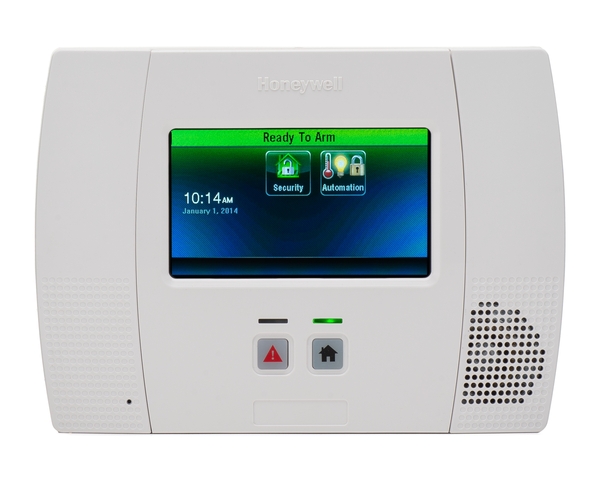Honeywell's much anticipated L5200 has finally been released. The L5200 is the sister panel to this year's ISC "Best in Intrusion" winner, the Honeywell L7000, which is expected to be released in the latter half of 2014. Like the predecessors of these two panels, Honeywell has designed the L5200 to be an integrated system that combines state-of-the art wireless security features such as Advanced Protection Logic (APL) and Interactive services that allow an user to control the system from any smart device, with the incredible convenience afforded by modern home automation products.
With this release, Honeywell has gone far to address many of their consumers' demands, and it's clear that with this panel the company is furthering its commitment to improved user experience. They have removed many of the disparaging limitations of the old L5100 panels: the Honeywell L5200 comes with more zones of protection, the ability to display a camera on screen, and one of the most exciting developments in Honeywell's technology comes with the announcement that the L5200 is flash upgradeable.
This feature, which allows the panel to download the latest software updates that have been released for the unit, addresses one of the chief complaints consumers have had about the old panels - no updates means no access to new features.

The release of this panel is met with another incredible development in the security industry: the rise of DIY. Since vaulting to prominence in mid-2012, Alarm Grid has set the standard for DIY home security by providing resources to DIYers that they never had access to previously. The Honeywell L5200 is the first panel to have been released since this DIY culture has become widespread. As such, the Alarm Grid team believes that it will be a great test of this new, up-and-coming model: "Do-it-yourselfers have really taken up the reigns in this industry. These panels are easy to understand, they are simple to program, and they are simple to install," said Joshua Unseth, Alarm Grid's director of marketing. "We believe that the L5200 is a great addition to Honeywell's already stellar line of products. It's a great step forward, and we think that DIYers will be quick to embrace it."
While the release of a security system like the L5200 would generally mean big money for installers who bank on consumers knowing very little about how these systems work, Alarm Grid has already released the L5200 manuals, they have begun writing L5200 frequently asked questions, and they have even released a L5200 DIY installation video, which they say shows just how simple installing this system yourself can be.
"We don't think you have to be an experienced DIYer to install a security system," said Sterling Donnelly, President of Alarm Grid. "I'm always amazed by the range of people who call us and decide to try DIY security. A lot of consumers don't even know that a self-installation is an option when they start looking at security equipment. Our goal is to make it easy. For those who want to give it a try, our tech team patiently guides them through every step of the way."
When asked how non-professionals can purchase the equipment, Unseth replied, "Alarm Grid has made it easy to get your hands on this equipment. We are committed to making sure that end users have the same access to this equipment as installers have, and we want to make sure that they have access to as much information as any professional installer would have. Not only that, but we are committed to making sure that this high-quality Honeywell equipment is affordable enough for anyone who wants a security system in their home. All an user has to do is visit our site, and purchase an L5200. We send it on, it gets delivered, the end-user can watch a few videos to figure out how to install and configure it, and should they run into trouble, they can always call us at no cost."
Alarm Grid has released 9 pre-configured kits that include the brand new wireless security system, each coming with a bevy of sensors and communicators. Regarding the quality of their hardware, Unseth points out that lots of other DIY companies have built their business on consumer hatred of this industry. "It's a well known fact that big players in home security are not well loved. But those DIY companies generally make sub-standard equipment." Alarm Grid's equipment is the same product a consumer would get if the system had been installed by ADT or another big-company installer. "With us that's what you get, great hardware at a great price, and alarm monitoring with a company you can trust and that will treat you well. We treat our customers the same on day one as we do after they have installed the system and are monitored. After all," Unseth smiled a little before adding, "since Alarm Grid doesn't believe in contracts, we have to work to win the business of our customers every single month."







